After being robbed in Utila (Bay Islands, Honduras) in 2007 – click link for the story, we take security very seriously aboard Winterlude. It’s been our observation that most theft aboard cruising boats is opportunity theft — i.e. if the opportunity exists, is easy and not likely to have any complications, your stuff could disappear!
And if you’re cruising outside the US, never forget that honest, hardworking local families want to buy their kids Christmas presents just as much as you do, but they may not have the means. Petty theft always increases around holidays, so be alert. If you want to keep your stuff, there are a few security measures you can take … here’s a few of our favorite items used for security.
These locks were recommended by The Shop in the Rio Dulce Guatemala, the company that custom fabricated the security bars we use aboard Winterlude. When a friend that owns a storage business told us that these are the only locks they have trouble cutting off when people abandon their storage units, we were sold. They are German engineered to be some of the sturdiest, hardened stainless steel with heavy duty everything, including the keys! We bought several – you’ll need to insure you get the right size, the dimensions are on the Abus Locks website here. We also like the feature that allows you to get them keyed alike or differently. We opted for alike since we have so many that look identical — can you imagine fumbling with 10 different keys while trying to unlock your dinghy at the dinghy dock after happy hour with friends??? Nah, get them all keyed alike! 🙂 And don’t forget routine maintenance – see “Freeze Free: Easy Lock Maintenance”.
Master Lock Outboard Motor Lock
This is what we use to lock our outboard to the boat rail and also on the dinghy. It is NOT foolproof and doesn’t come highly recommended by other cruisers, but we’ve used one for years as PART of our dinghy security plan – (click to see the post with more of what we do, rightly or wrongly) and haven’t had our Tohatsu 8 hp stolen (knock on teak) despite spending several years in the Western Caribbean including, Rio Dulce, Guatemala and the Bay Islands, Honduras. It is not stainless — there is a stainless version, but for the price difference, we always just replace ours every couple of years when it rusts. Keep in mind, the Freeze Free Lock Maintenance is CRITICAL on this brass Master lock. The first year we left the boat in the Rio Dulce, we didn’t, and it literally took us 3 days to get the outboard off the rail. So be sure to clean and lubricate your locks regularly – but especially just before you leave it for six months if you’re a commuter cruiser!
The saying goes, if you want to keep your dinghy/outboard, have a bigger better lock and chain than the next boat! But the reality is, if the mischief-makers are properly equipped with cable cutters, or whatever, they can cut your cable. So there is no perfect solution. We use a Kryptonite cable 3/8″ braided steel cable with a heavy vinyl coating – which they tell me has greater resistance to cutting than twisted cable – as I mentioned I don’t think it matters, what matters is that yours is more of a deterrent than the next guys. We actually have several of these – two long enough to go from the eye of the dinghy, through the gas can, to a dock and lock securely. One problem with this type is the eye on the dock end is invariably too big to fit through the cleat eye on the dock – so you have to be a bit creative with what you lock it to. And remember, if you’re using a combination lock and returning after dark, you WILL need some sort of light to see the combination. Once when we still had the combination lock, we forgot this part and had to chase a nice man down on the streets of Placencia Belize to let us borrow his lighter to see to set the combination numbers to open the lock. Of course, it was windy that evening and the lighter kept going out…. When we hang the dinghy at night on the side with a halyard and bridle, the outboard goes on the rail and the cables are used to lock the gas can inside the dinghy and another to lock the hanging dinghy to the boat.
Motion Detector Light for Cockpit
Some boats have motion sensor lights for their cockpits, the theory being a bright light that comes on unexpectedly may deter anyone entering your cockpit mischievously. This one is battery operated LED, weatherproof and looks similar to what some friends are using. It also has the advantage of turning on when you need to see to unlock the companionway or climb aboard. The disadvantages of this and other motion lights is they often go off with false alarms, making you jump to see what set off the light. We’ve known cruisers that had something as silly as a dragonfly or even the wind set off the light. On the other hand, it’s inexpensive and if it makes you feel safer, go for it! There are zillions of choices here, at Amazon
These are the same concept as the motion detector light, except they also add an piercing alarm feature. You can switch back & forth between the light and the alarm or both. The biggest drawback, from friends that used something similar, was the false alarms. It’s terribly disconcerting when a piercing alarm sounds at 3 AM in an anchorage because a seagull flew by the cockpit. Note that we have not personally experimented with either the motion light or motion alarms because we feel secure with our safety bars and heavy duty companionway slats. If someone’s going to go to the trouble to use a sledge hammer to break into our companionway, we’ll probably hear it, as well as other boats will hear it!
Having said we feel secure aboard with our security bars & heavy companionway, we also keep an Air Horn handy for alerting other boats in an anchorage if there’s a problem and Bear Spray in the very unlikely instance that someone has actually boarded the boat. We keep both in the pullman berth area so if we’re awakened in the middle of the night, we can sound an alarm or use the bear spray if absolutely necessary.
Friends of ours had intruders come into the boat, all the way back to their bedroom area. They used the bear spray to chase them out – no problem the intruders, sputtering, coughing and cursing left immediately. Unfortunately then that area of the interior of the boat was covered with bear spray residue, creating a massive clean up job. Also, always remember 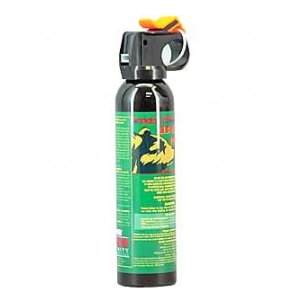 what direction the wind is blowing if you use bear spray outdoors or out a porthole, you don’t want it blowing right back in your face!
what direction the wind is blowing if you use bear spray outdoors or out a porthole, you don’t want it blowing right back in your face!
Davis Mega-Light for Cockpit Illumination
We like leaving the Davis Mega-Light plugged in in the cockpit while we’re gone. It automatically comes on at dusk, uses almost no juice and has a fairly bright light — so much in fact that our buddy boat used to complain about the light bothered them in their cockpit. I think the newer design and bulb is less harassing to the neighbors! 🙂 With light in the cockpit anytime we’re away after dark, anyone going by in a dinghy can see an intruder in the cockpit and sound an alarm. And we don’t worry about it going off accidentally scaring us to death! We unplug it when we get ready to go to bed, but we could leave it on all night — and have in some instances where we wanted the boat more lit up than just the anchor light — anchored in rivers or somewhere the locals like to zoom around at night.
Do you have other security measures you take aboard your boat? Please leave a comment and share the information! We could all benefit! Cheers! Jan
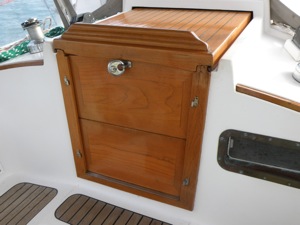
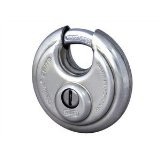
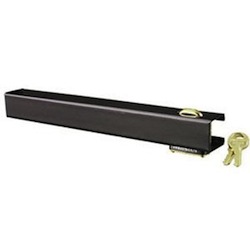
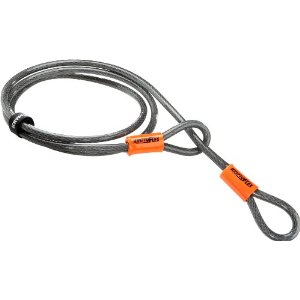

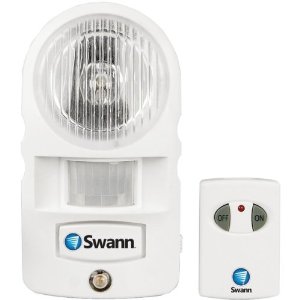
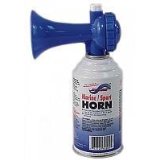


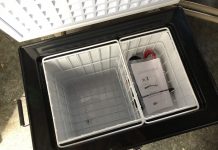










I am a British boater expat in East Asia…we have done the Carib. Asia is much safer because they don’t tolerate crime here ! The Carib. is far too dangerous these days and it’s NOT the white folks from Fla. or anywhere else that’s committing the violent crimes !
Tourists, boaters,etc are viewed as open season…get my drift ?